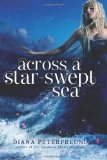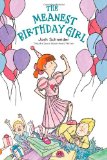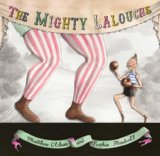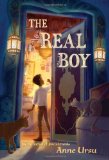Review of Savvy, by Ingrid Law
by Ingrid Law
Puffin Books, 2008. 342 pages.
Starred Review
2009 Newbery Honor Book
My copy of Savvy is inscribed to me from the author, acquired at ALA Annual Conference 2011. I finally read it on the plane on the way to ALA Annual Conference 2013. What in the world took me so long? I completely loved it. I wasn’t surprised to do so, since fantasy that wins Newbery Honor is pretty much a sure thing for me.
The book opens as Mibs is turning thirteen. Here’s how the book opens, when she explains why turning thirteen is significant in their family:
When my brother Fish turned thirteen, we moved to the deepest part of inland because of the hurricane and, of course, the fact that he’d caused it. I had liked living down south on the edge of land, next to the pushing-pulling waves. I had liked it with a mighty kind of liking, so moving had been hard — hard like the pavement the first time I fell off my pink two-wheeler and my palms burned like fire from all of the hurt just under the skin. But it was plain that Fish could live nowhere near or nearby or next to or close to or on or around any largish bodies of water. Water had a way of triggering my brother and making ordinary, everyday weather take a frightening turn for the worse.
Her turn is coming soon:
My savvy hadn’t come along yet. But I was only two days away from my very own thirteen dripping candles — though my momma’s cakes never lopped to the side or to the middle. Momma’s cakes were perfect, just like Momma, because that was her savvy. Momma was perfect. Anything she made was perfect. Everything she did was perfect. Even when she messed up, Momma messed up perfectly.
But before Mibs’ birthday can be properly celebrated, with powerful adults keeping an eye on things in case her new savvy gets out of control, her Papa gets in a car accident and is in a coma in the big city. Mibs and Fish and toddler Gypsy are left behind with Grandpa.
When the preacher’s wife gets wind of Mibs’ upcoming birthday, she plans a birthday party with her daughter and all the girls from Sunday School.
I could feel Fish and Grandpa getting more and more nervous at all the talk of parties. Thirteenth birthdays in the Beaumont family were strictly non-public affairs.
What follows is a delightful sequence of disasters. Mibs and Fish stowaway in a bus along with the preacher’s son and older daughter, driven by a Bible salesman who sells pink Bibles that no one wants. They want to get to Poppa, but have to take some detours along the way. Mibs learns her incredibly quirky Savvy, and learns a lot about people along the way.
Over-the-top adventures with quirky characters and a whole lot of heart. It’s easy to see why this book caught the attention of the Newbery committee. I’m so glad I finally read it!
Find this review on Sonderbooks at: www.sonderbooks.com/Childrens_Fiction/savvy.html
Disclosure: I am an Amazon Affiliate, and will earn a small percentage if you order a book on Amazon after clicking through from my site.
Source: This review is based on my own copy, gotten at ALA Annual Conference and signed by the author.
Disclaimer: I am a professional librarian, but I maintain my website and blogs on my own time. The views expressed are solely my own, and in no way represent the official views of my employer or of any committee or group of which I am part.










